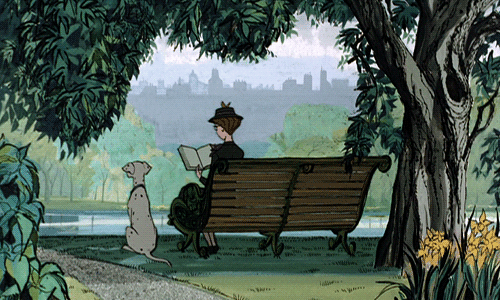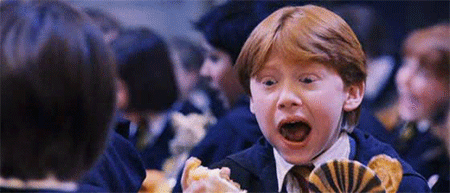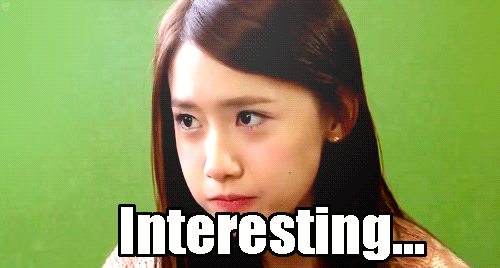Navigation
Assignment Design
Remediation as Remaking
While collaborations with book-arts programs and technology incubators allow some students to set type, create prints, or craft digital projects from scratch, assignments that emphasize remediation and the material constraints on composition provide another avenue for facilitating the student’s experience of making in relation to the material book. For example, students in a Renaissance literature class assigned to keep a manuscript commonplace book gather information about reading print and manuscript texts in the Renaissance as well as about the content of the texts they personally compile. Emphasis on the technologies of reading and responding can also reflect a more recent reading practice: by remediating texts from print or manuscript to digital formats—particularly multimodal formats such as websites which include GIFs, YouTube videos, and audio files—students draw on their own intertextual references and cultural touchstones to communicate ideas they see as important to that text. Kress’ (2010) idea of multimodal production, which is grounded in the “implementation of design with the resources available in the world in which the communication takes place,” is particularly well reflected in students’ use of semiotic resources such as GIFs (p. 27). Such production draws from modes that are “socially shaped” and these semiotic resources are increasingly a part of the “new media landscape” that Kress sees as one of “production and participation” rather than consumption (p. 79, p. 22). Students master tools that allow them to better situate texts within their own “home” discursive environments; the result is often a much greater personal connection to the text they interpret.
Maker style assignments can significantly contribute to pedagogy in both the
technologically-oriented classroom and the more traditional literature classroom.
Hypertext has often entered the literature classroom not as a tool for students
to explore their own readings and responses to material, but as a way
to facilitate access. Rather than having students code themselves, they are presented
with hypertexts meant to guide their discovery and interpretation of
canonical texts.
As Corns (2000) has pointed out, there are persistent
concerns that “pedagogic hypertext” comes prepackaged with
“intertext as a tendentiously determined closed set” in
which “the maker of the system surrounds the target text with texts of
his or her choosing ... and then defines the links or the anchor points which he
or she regards as appropriate for a right understanding, which will be the
maker’s understanding” (p. 99). Although these texts facilitate students’
encounters with literature, they remain a closed system. When students
code the hypertext and select the intertextual connections themselves, however,
they can express their own understanding of the text.
way
to facilitate access. Rather than having students code themselves, they are presented
with hypertexts meant to guide their discovery and interpretation of
canonical texts.
As Corns (2000) has pointed out, there are persistent
concerns that “pedagogic hypertext” comes prepackaged with
“intertext as a tendentiously determined closed set” in
which “the maker of the system surrounds the target text with texts of
his or her choosing ... and then defines the links or the anchor points which he
or she regards as appropriate for a right understanding, which will be the
maker’s understanding” (p. 99). Although these texts facilitate students’
encounters with literature, they remain a closed system. When students
code the hypertext and select the intertextual connections themselves, however,
they can express their own understanding of the text.
Students select and curate GIFs signifying specific emotions, gestures, and (more rarely) plot elements, (re)constructing their readings and developing their interpretations through
dialogue with contemporary media. The use of these clips puts into practice a recognition
that canonical literary texts can resonate with students’ modern media experiences. Sayers (2011) explored the utility of digital composition,
particularly the compilation of pre-made units such as GIFs and remediated texts, in his examination of “Tinker-centric” pedagogy
practices. For Sayers, the collaborative nature of such assignments is one of
their primary benefits to the literature and composition classroom. He points
out that digital humanities work has provided the tools for collaborative
explorations of texts that occur in a multidirectional, “situation and
context dependent” method which he describes as
“tactical” (p. 279). In composing a reading response through
the process of remediation in this mode, students are able to draw on not only
the diverse readings within their collaborative group, but also on cultural
associations embodied in a wide variety of genres and individual works that form
the sources for GIFs and other media snippets.
texts, in his examination of “Tinker-centric” pedagogy
practices. For Sayers, the collaborative nature of such assignments is one of
their primary benefits to the literature and composition classroom. He points
out that digital humanities work has provided the tools for collaborative
explorations of texts that occur in a multidirectional, “situation and
context dependent” method which he describes as
“tactical” (p. 279). In composing a reading response through
the process of remediation in this mode, students are able to draw on not only
the diverse readings within their collaborative group, but also on cultural
associations embodied in a wide variety of genres and individual works that form
the sources for GIFs and other media snippets.
Finally, the experimental nature of “tinkering,” the ability to fail and easily recover from failure, makes students more comfortable in attempting uncertain or risky interpretations. Facilitating this process of experimentation supports a culture of “failing successfully” in the classroom, and re-imagines failure as an unplanned but essential element in developing interpretive skills.
WEPO Outcomes / Deliverables: Assembling Reflections
Williams (2001) argues that helping students develop skills that allow them to engage with a more contemporary “hybrid, expansionist literacy” which includes both “older” and “new” literacy skills requires, first, a digital environment to operate in and, second, a pedagogy based on a “design process” model that aims to teach students to see themselves as “assemblers” of complex elements. Ultimately, he argues that “building a pedagogy on a combination of the design model and on the possibilities that verbal text, visual text, and hypertext uniquely and in concert allow” facilitates student connections among disparate texts and “enables students to recognize that knowledge is always contingent on its context” (pp. 132–133). More recently, in her introduction to Towards a Composition Made Whole (2011), Shipka shares her concerns that the narrowing definitions of technologies “coupled with the tendency to use terms such as multimodal, intertextual, multimedia, or media-rich as synonyms for digitized products and processes” will blind students from conceiving of composing as “the assemblage of an array of hybrids of modes—hybrids that we have yet to imagine” (pp. 10, 11). For both Williams and Shipka, writing is a process of assemblage seen in the context of a spectrum of material transformations in which the experience of materiality alters from situation to situation.

A central question in Josh’s class from the first day was how to define “writing” in the context of changing inscription technologies and approaches to composition. Josh also posed the question in a journal assignment that accompanied students’ HTML projects: “Is Coding Writing?” seeking to discover, following their experiences both with HTML and over the course of the semester, what commonalities or linkages, if any, they might see between more traditional forms of writing and creating HTML code. For Selber (2004), reflection is a fundamental parameter in rhetorical literacy which invites “students to become researchers of their own activities” (p. 156). To implement this, students were asked to write a traditional course reflection and to code this reflection, making it a part of their larger basic website project. In addition, keeping in mind that the concept of multimodality was a key term throughout the semester, their reflection was also to include GIFs throughout the text. On top of considering the multimodal nature of composing online, students were also reading excerpts from Lawrence Lessig’s Remix. Josh explicitly asked students to consider their use of GIFs as a kind of “remixing” of their own traditionally written text, assimilating other elements into their reflection.

Reflection was central to this assignment as well as the class as a whole, particularly as the class traced students’ changing definitions of writing. In Reflection in the Writing Classroom, Yancey (1998) retheorizes Donald Schön’s two concepts of reflection, viewing reflection instead as three interrelated concepts that apply to the teaching and learning of writing: “reflection-in-action,” “constructive reflection,” and “reflection-in-presentation.” “Reflection-in-action,” for Yancey, is “the process of reviewing and projecting and revising, which takes place within a composing event, and the associated texts” (p. 13). Reflection-in-action helps students acquire four kinds of knowledge. First, “self-knowledge” of one’s own kinds of writing practices, rituals, and experiences; second, “knowledge of the content,” an ability to articulate not only knowledge of the text but also larger insights that the writer has gained that may not be visible in the text; third, the fostering of what Yancey calls “task knowledge,” an awareness of the nature of writing such as audience, argument, and rhetorical situation; finally, “judgment” which requires that writers familiarize, come to know, like, and ultimately critique their own work, as well as develop their expertise in writing.
Ultimately, what Josh was aiming for in this reflection was a demonstration of “self-knowledge” of experiences in the course as well as of “knowledge of content” of the course material itself. In addition, the journal response operated both as a process description of students’ HTML coding and a companion piece for the larger HTML project.

The second component of Yancy’s reflective practice, “constructive reflection,” represents a process of “developing a cumulative, multi-selves, multi-voiced identity, which takes place between and among composing events, and the associated texts” (p. 14). For Yancey, taken together with “reflection-in-action,” these components create “diverse stories of how these writers have invented, how they continue to invent, themselves” (p. 49). In this way, the responses that students offer via “constructive reflection” represent what she has called the “experienced curriculum” (2004). In the context of the WEPO class, the course reflection offered an opportunity for students to review their experiences composing with a variety of writing tools. Constructive reflection, Yancey (1998) states, represents the “cumulative effect of reflection-in action” that entails “a writer’s ability to gather knowledge and apply that knowledge to similar problems” (p. 51). Ultimately, she observes, by attending to students’ reflective responses, we can begin to see that “in these responses students use their native language—that is, the language in which they think, a product of the multiple discourse in which they participate, the idiolect native to that speaker and writer” (p. 56). By asking students to contemplate their practices over time they, hopefully, begin to “see themselves emerge as writers with practices and habits that transcend specific texts” and, as she notes, by “working in the particular, they mark and map the general” (p. 59). Both the reflection and the journal aimed to encourage students to employ their own language and ro draw from multiple discourses that they regularly participate in, including the cultural language of GIFs.
Finally, the third component, “reflection-in-presentation,” as the name implies, requires both a reflective “seeing inside” as well as a presentation of a public text prepared for an audience. This component is rhetorical, particularly in the presentation of the self, which, as in the genre of autobiography, highlights a tension between an actual self and a represented self. Josh noticed that students frequently selected characters in the GIFs to represent a kind of “avatar” of themselves. The reflections offer views into how students envision themselves and their relationship to writing, and how their learning experiences altered that view throughout the semester.
HoIT Outcomes / Deliverables: Coding The Canterbury Tales
For the unit on illustrated hypertexts, students were introduced to HTML and CSS composition and then required to work in groups to create webpages illustrating excerpts from Geoffrey Chaucer’s The Canterbury Tales. There were two deliverables from the assignment: a group-designed and implemented website and a one-page personal reflection paper, which centered around Yancey’s concepts of “judgement” and “self-knowledge.” Meaghan wanted to know not only what the groups intended their end results to be, but also how they managed the design process and how they negotiated their group dynamic. In keeping with projects from the rest of the semester, the primary focus for the hypertext illustration assignment was visual, emphasizing page layout, color, and font choices, and the selection and placement of images. While other assignments in the course privileged specific media or interpretive frameworks, the digital illustration project attempted to combine the two, allowing students to both remediate a well-known narrative and, in the process, provide a contextualized view of their reading of that narrative.
Once in groups of between four and five students, each group selected a portion of The Canterbury Tales to illustrate.
For most of the projects in the course, students were allowed to pick their own
subject matter: in the manuscript design project, student submissions have
included medieval bestiaries with miniatures of animals, oddly elaborate legal
texts, and a version of the opening passage of Star Wars with gymnastic initials
depicting Luke and Leia, among others.
1
In this assignment, however, Meaghan chose to constrain their choice of
texts to tie in with several examples the students had studied over the course of the
semester. The class had spent considerable time on the Ellesmere Chaucer (and the concept of its digital and
physical facsimiles), as well as touching on William Caxton’s 1483
printed edition, the first illustrated book printed in England. Meaghan
specifically wanted students to think of their digital project in relation
to these two precursors and phrased one of the opening questions of the
assignment to highlight this: “Consider the possibilities afforded by
the medium—what can hypertext do that a medieval manuscript or early
printed text cannot? What will you illustrate? Where will the image(s)
go?”
selected a portion of The Canterbury Tales to illustrate.
For most of the projects in the course, students were allowed to pick their own
subject matter: in the manuscript design project, student submissions have
included medieval bestiaries with miniatures of animals, oddly elaborate legal
texts, and a version of the opening passage of Star Wars with gymnastic initials
depicting Luke and Leia, among others.
1
In this assignment, however, Meaghan chose to constrain their choice of
texts to tie in with several examples the students had studied over the course of the
semester. The class had spent considerable time on the Ellesmere Chaucer (and the concept of its digital and
physical facsimiles), as well as touching on William Caxton’s 1483
printed edition, the first illustrated book printed in England. Meaghan
specifically wanted students to think of their digital project in relation
to these two precursors and phrased one of the opening questions of the
assignment to highlight this: “Consider the possibilities afforded by
the medium—what can hypertext do that a medieval manuscript or early
printed text cannot? What will you illustrate? Where will the image(s)
go?”
The HoIT class read the Wife of Bath’s prologue and tale early in the
semester and talked extensively about the structure of The Canterbury
Tales in relation to their early illustrations. By having students
revisit this narrative, the assignment could focus on understanding how textual
interpretation is influenced by the medium of illustration. In an effort to
still allow students options, however, Meaghan did not specify which Tale their
excerpt had to come from, allowing them free rein to select the length and scope
of the excerpt. While Meaghan provided a link to a
convenient modern language online edition hosted on the English department’s web
servers, students could and did bring physical copies of various editions of the
work to class. Most, unsurprisingly, chose the tale read for class;
however the choice of excerpt varied widely. Two groups chose portions of the
Wife’s prologue and four selected sections from her Tale, with
emphasis on the
denouement. The final three groups chose excerpts from the Lawyer, Cook, or
Knight’s tales, respectively. Employing a text which students had
previously encountered in manuscript and print emphasized a focus on both
 content and media for the assignment, and the result was as much an act of
interpretation as of composition. Students saw the possibility of using GIFs and
other dynamic elements of hypertext as a means of “updating”
texts encountered in other media. As one student put it in her written response,
content and media for the assignment, and the result was as much an act of
interpretation as of composition. Students saw the possibility of using GIFs and
other dynamic elements of hypertext as a means of “updating”
texts encountered in other media. As one student put it in her written response,
1 among others: I try to provide a number of ways of completing these hands-on assignments, as I realize that some students firmly believe they cannot do “artistic” things. While straight ruling was a requirement of the manuscript assignment, images could be added through collage if the student felt sketching was not their strong suit. Students are not graded on artistic merit in any assignment, but rather on demonstrated understanding of the significant properties of the medium.